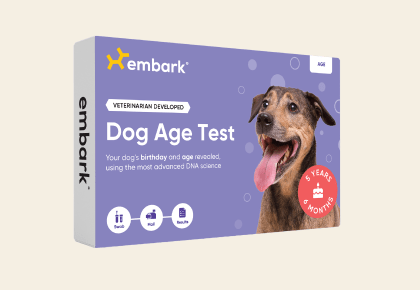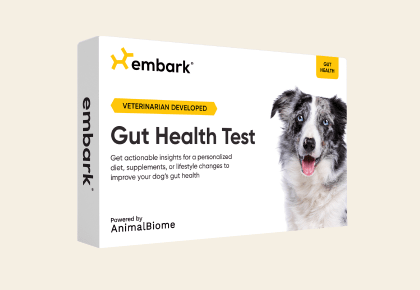Progressive Retinal Atrophy, Bardet-Biedl Syndrome
Progressive retinal atrophy (PRA) describes a group of non-painful inherited disorders of the retina that results in vision loss in dogs. Early-onset PRAs are typically expressed between two and six weeks of age and are characterized by the abnormal development of the rod and cone photoreceptors. The late-onset forms of PRA are degenerations of photoreceptors that have completed normal development. This BBS2 variant causes a late-onset form of PRA that includes syndromic components such as an upturned nose, dental abnormalities, and an unusual coat.
-
Signs and symptoms
A dog with decreased vision may be reluctant to go down stairs or into a dark room or outside at night. They may bump into door frames or corners and have difficulty fetching toys. You may notice a characteristic eyeshine due to increased reflectivity of the eye. Affected dogs may also react more slowly, or not at all, to sudden light or movement. In addition to PRA, this variant may cause an upturned nose, dental abnormalities, and a wavy coat.
The age of onset of clinical signs of PRA varies. However, dogs whose age was documented were diagnosed with PRA at over six years. An upturned nose, an abnormal coat of a wavy texture, and dental abnormalities become increasingly noticeable as dogs develop, becoming more apparent around the age of six months. -
Diagnosis
A diagnosis of PRA is made by examination of the back of the eye (the "fundus"). In the early stages, it may be difficult to observe any obvious changes to the retina, but as the disease progresses, a veterinarian will observe increased reflectivity of the eye, thinning of the retinal blood vessels, and atrophy of the optic nerve. A veterinary ophthalmologist can perform an electroretinogram (ERG), which measures the electrical activity of the retina. Since cataracts often develop secondary to PRA, an ERG is crucial to evaluate for PRA prior to considering cataract surgery.
-
Treatment
Currently, there is no widespread treatment for progressive retinal atrophy; however, gene therapy is an evolving field.
-
What to do if your dog is at risk
Actions
- Because the condition is progressive, dogs will adapt to the gradual vision loss over time. To help your dog navigate your home and the outside world, keep furniture in the same location, make sure they are on a leash when in unfamiliar territory, and train them to understand verbal commands or use scent markers.
- Cataracts secondary to PRA generally occur later in the disease progression and are presumed to occur due to oxidative stress on the lens from the degenerating retinas (“toxic” cataracts). Oral antioxidant therapy has been shown to improve retinal function in normal dogs as well as decrease oxidative stress on lens cells, which can help delay cataract formation. Ask your veterinarian if an antioxidant supplement is right for your dog.
-
Genetic Information
This variant was first identified in Shetland Sheepdogs.
PRA is inherited in an autosomal recessive manner, meaning that affected dogs must have two copies of the variant to show clinical signs from it.
Gene names:
BBS2 Exon 11 ‐ chr
Inheritance type:
recessive
Citations:
-
Breeds affected
This health condition affects the following breeds
Learn about your dog’s unique genetic health
Dog owners
Breed identification, health and trait insights, personalized care recommendations, and the world’s first canine relative finder—all in one leading dog DNA test.
Learn about the report for dog ownersShop the test
Breeding programs
Embark’s test for breeding programs is one comprehensive DNA test designed with your needs in mind.
Learn about the report for breedersShop the test











